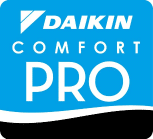
Indoor air quality is crucial in maintaining a comfortable, healthy, and safe living environment for you and your family. As homeowners spend more time indoors, especially during extreme weather conditions, ensuring optimal indoor air quality has become more critical than ever. A well-maintained indoor environment contributes to overall comfort and significantly impacts respiratory health, allergy symptoms, and even energy efficiency.
Explore the key aspects of indoor air quality management, focusing on the essentials of ventilation systems, air purification solutions, and humidity control. Learn about the numerous factors influencing indoor air quality, from pollutants and allergens to moisture and ventilation rates. Moreover, discover practical advice on evaluating your home’s current air quality, identify potential issues, and select the most suitable solutions for your specific needs.
As you delve further into this guide, you will gain essential insights into improving and maintaining your home’s indoor air quality, ultimately leading to a healthier, more comfortable living environment for your family. At Total Home Services of Utah, we understand the importance of maintaining excellent indoor air quality. We provide top-tier ventilation systems, air purification solutions, and humidity control services. Our services ensure that homeowners’ living spaces are comfortable and conducive to good health and energy efficiency. Trust us to help you navigate the complexities of indoor air quality management, ensuring a safer, healthier home for you and your loved ones.
Air Duct Cleaning and Maintenance
Proper air duct cleaning and maintenance are crucial for maintaining optimal indoor air quality, as they directly influence your home’s ventilation and air distribution. Here’s why regular duct cleaning is necessary:
- Improved Air Circulation: Clean air ducts allow air to flow more efficiently, contributing to better circulation and overall comfort.
- Reduced allergens: Regularly cleaning your air ducts helps minimize the buildup of dust, mold, and allergens, leading to a healthier environment.
- Enhanced Energy Efficiency: Clean and well-maintained ducts enable your HVAC system to run more efficiently, saving energy and reducing utility bills.
- Prolonged HVAC system Lifespan: Duct cleaning can help prevent excessive wear and tear on your HVAC system, extending its lifespan.
Air Purification Solutions
Incorporating air purification solutions into your home can improve indoor air quality by removing pollutants and allergens from the air. Some popular air purification solutions include:
- High-Efficiency Particulate Air (HEPA) Filters: HEPA filters can effectively capture particles as small as 0.3 microns, removing allergens, bacteria, viruses, and other contaminants from the air.
- Activated Carbon Filters: These filters use activated carbon to adsorb odors, volatile organic compounds (VOCs), and gases, resulting in cleaner, fresher-smelling air.
- Ultraviolet Germicidal Irradiation (UVGI) Purifiers: UVGI purifiers utilize ultraviolet light to neutralize airborne pathogens, such as bacteria, viruses, and mold spores.
- Electronic Air Cleaners: This technology uses electrostatic attraction to capture particles, with ionizers releasing negatively charged ions to attract and neutralize pollutants.
Balanced Ventilation Systems
A balanced ventilation system incorporates both mechanical exhaust and supply ventilation, ensuring a continuous exchange of fresh outdoor air with stale indoor air. Some common types of balanced ventilation systems include:
- Heat Recovery Ventilator (HRV): HRVs use a heat exchanger to transfer heat from outgoing stale air to incoming fresh air, minimizing energy loss while ensuring optimal ventilation.
- Energy Recovery Ventilator (ERV): Similar to HRVs, ERVs transfer heat between incoming and outgoing air. However, ERVs also transfer moisture, helping regulate humidity levels in your home.
- Balanced Ducted Systems: These systems use separate ducts to exhaust indoor air and bring in fresh outdoor air, providing evenly distributed ventilation throughout the home.
Humidity Control Techniques
Maintaining appropriate humidity levels is essential for indoor air quality and comfort since excessively high and low humidity can adversely affect health and well-being. Here are some practical methods to manage humidity:
- Dehumidifiers: Dehumidifiers remove excess moisture from the air, reducing indoor humidity levels and preventing issues such as mold growth and poor air quality.
- Humidifiers: These devices add moisture to the air to combat dryness, alleviating symptoms of dry skin, respiratory issues, and discomfort during colder months.
- Ventilation: Proper ventilation is crucial for maintaining appropriate humidity levels, as it promotes air exchange and prevents moisture buildup.
- Vapor Barriers: Installing vapor barriers in areas such as crawl spaces and basements can help prevent moisture infiltration and control indoor humidity levels.
Conclusion
Improving and maintaining your home’s indoor air quality is essential for a comfortable, safe, and healthy living environment. By focusing on proper air duct cleaning and maintenance, incorporating suitable air purification solutions, installing balanced ventilation systems, and using effective humidity control techniques, homeowners can optimize their indoor air quality and protect the well-being of their loved ones.
If you require expert guidance or professional services to help improve your home’s indoor air quality, don’t hesitate to contact our experienced team at Total Home Services of Utah. We are dedicated to helping you create a comfortable, clean, and healthy home for your family. Whether you’re experiencing issues with indoor pollution, allergens, or moisture control, our experienced professionals are here to help you navigate these challenges and provide the necessary guidance and services to ensure a comfortable and safe home. Contact us today to schedule an appointment!




